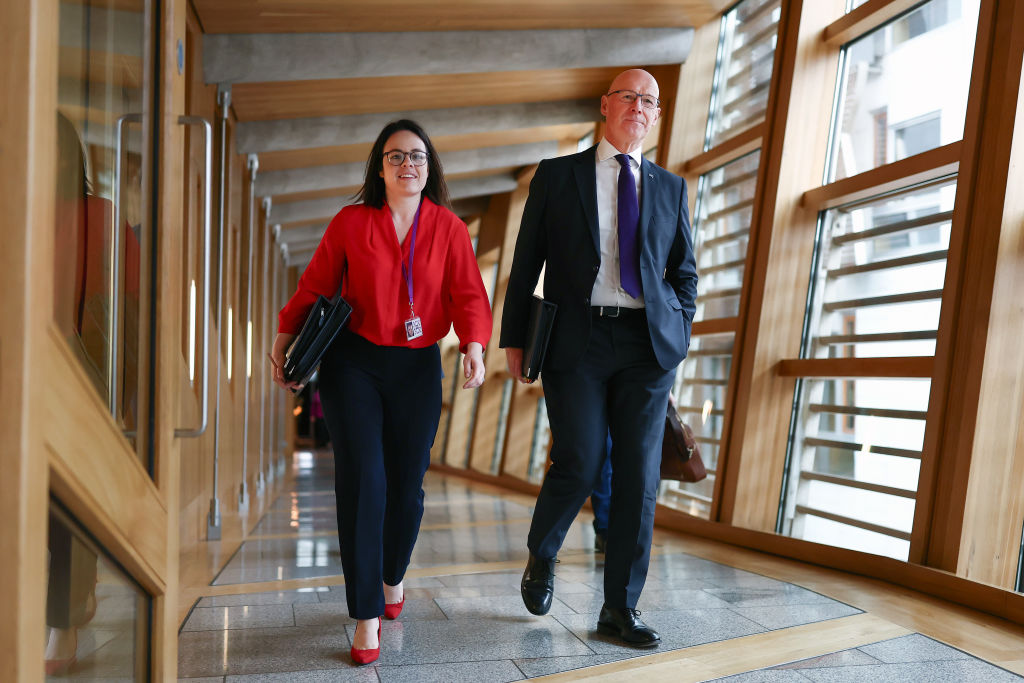After the general election skelping my party got in the July election, I was asked by Alex Massie (formerly of this parish) if I thought the SNP was in line to get horsed in the 2026 Holyrood election. I answered in the affirmative. Unless the party changed direction, then of course we would lose. Well, things look rather different now.
Since then, the mood within Scotland’s two dominant parties has changed dramatically. The SNP is the most upbeat it has been for a while while Labour’s sense of jubilant victory after its election landslide is tinged with vulnerability. The change in mood has been apparent in almost every conversation I’ve had with people from either side.
If I had a pound for every campervan joke, I could probably compensate the WASPI women.
Showing off my masochistic streak, I attended Scottish Labour’s winter gala dinner in early December (strictly business). I confess to worrying that it might look a bit odd – like going to a therapy session with the gang that mugged you – and so I took advice from my predecessor, Tom Harris. Tom, in his usual form, said that it would look odd and that was precisely why I should go. So I did.
Although I received a warm and friendly welcome, the mood was a far cry from the jubilation I was expecting. Sure, there was quite a bit of back-slapping and jokes-a-plenty at the expense us Nats – if I had a pound for every campervan joke, I could probably compensate the WASPI women – but a sense of triumphant glee there was not. This was a party that, while enjoying its success, had more than a sense of nervousness laced through that joy.
Fuelled by warm white wine and arancini balls, party members mingled with government ministers, MPs, MSPs, journalists and business figures – and there were more than a few mumps and moans about the new government, its performance and lack of overall political narrative. In the weeks since, that mood has hardened, and a miasma of despair is setting in.
By contrast, the SNP is optimistic, but only cautiously so. Buoyed by a few good polls for the party and a sense that the John Swinney and Kate Forbes government has calmed a once rocky ship, the party is not displeased to see the Starmer administration become a source of mounting discomfort for the Labour party in Scotland. The gift that keeps on giving, if you will.
But while Labour pains might make for good electoral mood music, it’s not in itself a guarantee of success. Although they are enjoying poking Labour’s weak points – WASPI, winter fuel payments and the two-child benefit cap amongst them – Swinney and Forbes understand that if they can’t materially turn public services around and improve Scottish living standards then the job of winning in 2026 will be that much harder. As things stand, the polls predict the SNP will lose seats in 2026 while Scottish Labour is on track to make gains – but the SNP is still set to end up with many more seats than Anas Sarwar’s party. And despite the problems faced by the SNP in recent years, Swinney’s personal ratings improved towards the tail end of 2024 after Sarwar’s fell slightly – an issue about which Scottish Labour is not ignorant.
The SNP’s concordat with the voters has taken a battering in recent times, but it is undoubtedly the case that John Swinney and Kate Forbes are having some success in fixing and renewing it. Theirs is an administration with a sharper ear for the public mood than that which went before them and, consequently, a lower threshold for bullshit. Their job is to keep that up – and improve their standing – over the next 16 months.
There’s also a Farage-shaped opportunity for the SNP. Reform UK did well in last year’s general election – at least for a party which, in Scotland, is much less organised – and is polled to breach the gates of Holyrood in 2026 at the expense of the Conservatives and Labour. One can expect to see Swinney position himself very firmly as the antithesis of everything Farage stands for: a mainstream, pro-European politician with a keen sense of Scotland’s national mood. Reform might be a difficulty for Labour and the Tories – but less so for the SNP.
All of this being said, a lot can happen between now and election day in 2026. And, of course, Operation Branchform remains ongoing. This awareness threads caution through the party’s newfound optimism. It's an issue they have no control over, yet it could make or break the party’s fortunes over the year ahead. A lot can change in 16 months and the party would do well to remember this in the lead up to 2026 – but in the meantime, its MSPs can prepare to return from their Christmas recess next week with a much greater sense of optimism than I had in 2024.






Comments